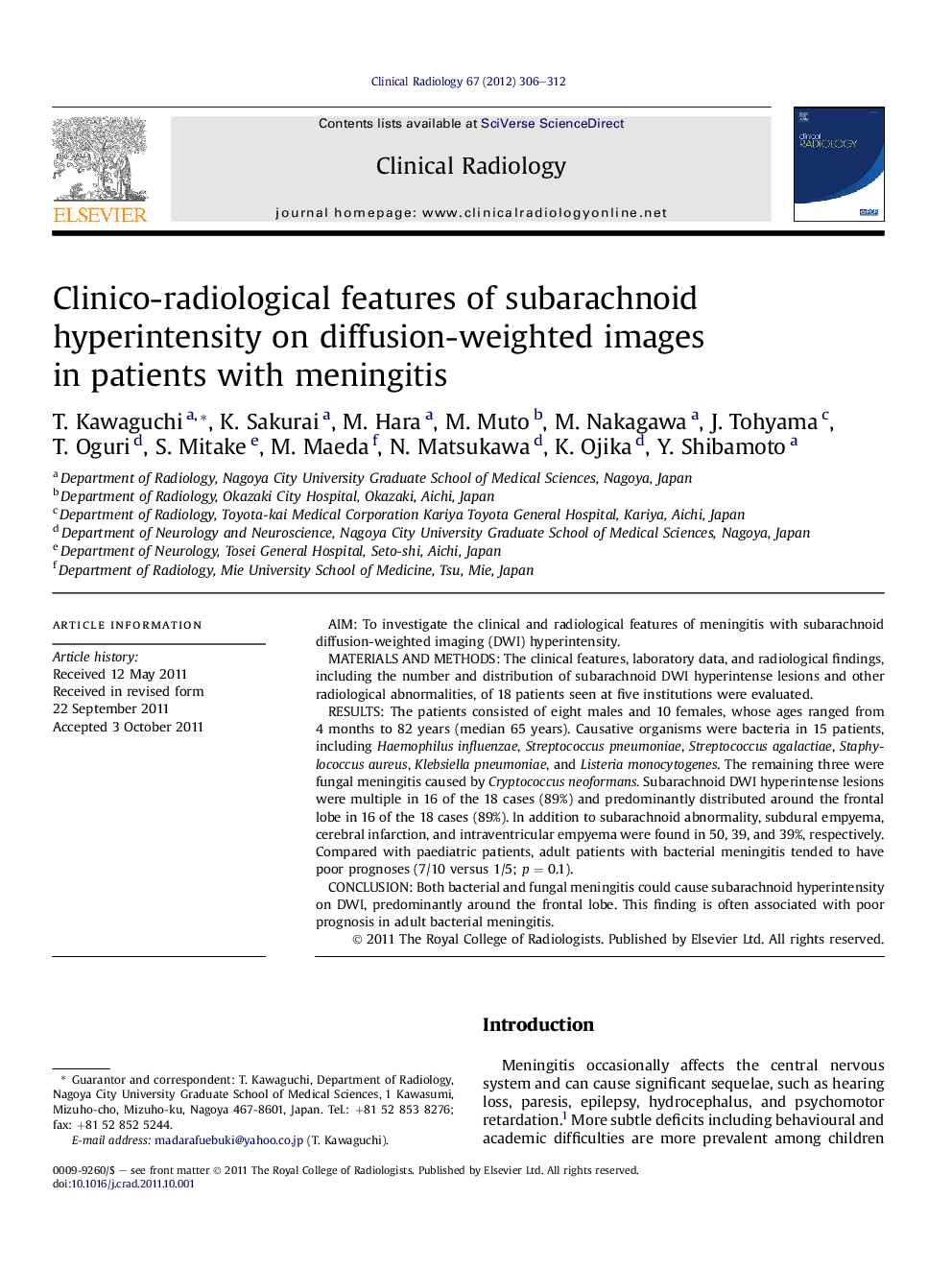| Article ID | Journal | Published Year | Pages | File Type |
|---|---|---|---|---|
| 3982093 | Clinical Radiology | 2012 | 7 Pages |
AimTo investigate the clinical and radiological features of meningitis with subarachnoid diffusion-weighted imaging (DWI) hyperintensity.Materials and methodsThe clinical features, laboratory data, and radiological findings, including the number and distribution of subarachnoid DWI hyperintense lesions and other radiological abnormalities, of 18 patients seen at five institutions were evaluated.ResultsThe patients consisted of eight males and 10 females, whose ages ranged from 4 months to 82 years (median 65 years). Causative organisms were bacteria in 15 patients, including Haemophilus influenzae, Streptococcus pneumoniae, Streptococcus agalactiae, Staphylococcus aureus, Klebsiella pneumoniae, and Listeria monocytogenes. The remaining three were fungal meningitis caused by Cryptococcus neoformans. Subarachnoid DWI hyperintense lesions were multiple in 16 of the 18 cases (89%) and predominantly distributed around the frontal lobe in 16 of the 18 cases (89%). In addition to subarachnoid abnormality, subdural empyema, cerebral infarction, and intraventricular empyema were found in 50, 39, and 39%, respectively. Compared with paediatric patients, adult patients with bacterial meningitis tended to have poor prognoses (7/10 versus 1/5; p = 0.1).ConclusionBoth bacterial and fungal meningitis could cause subarachnoid hyperintensity on DWI, predominantly around the frontal lobe. This finding is often associated with poor prognosis in adult bacterial meningitis.
